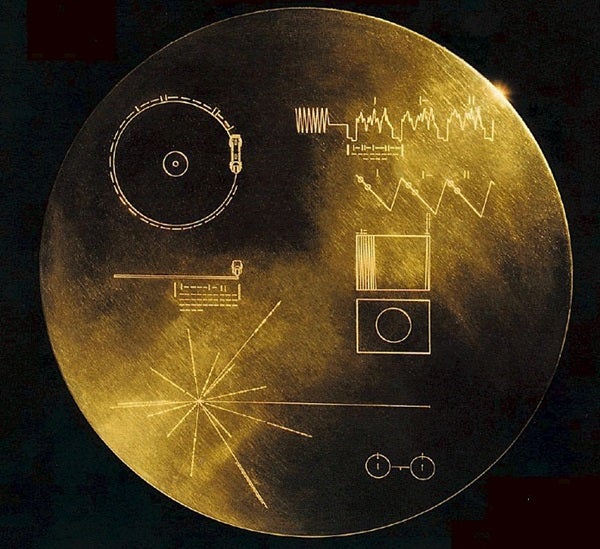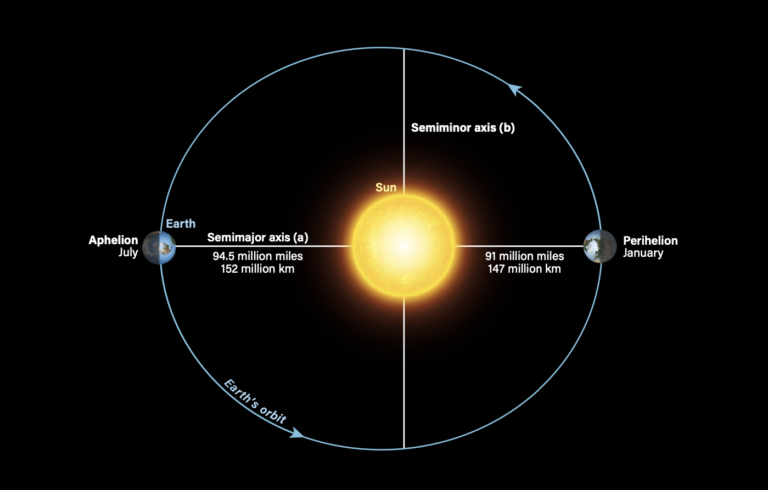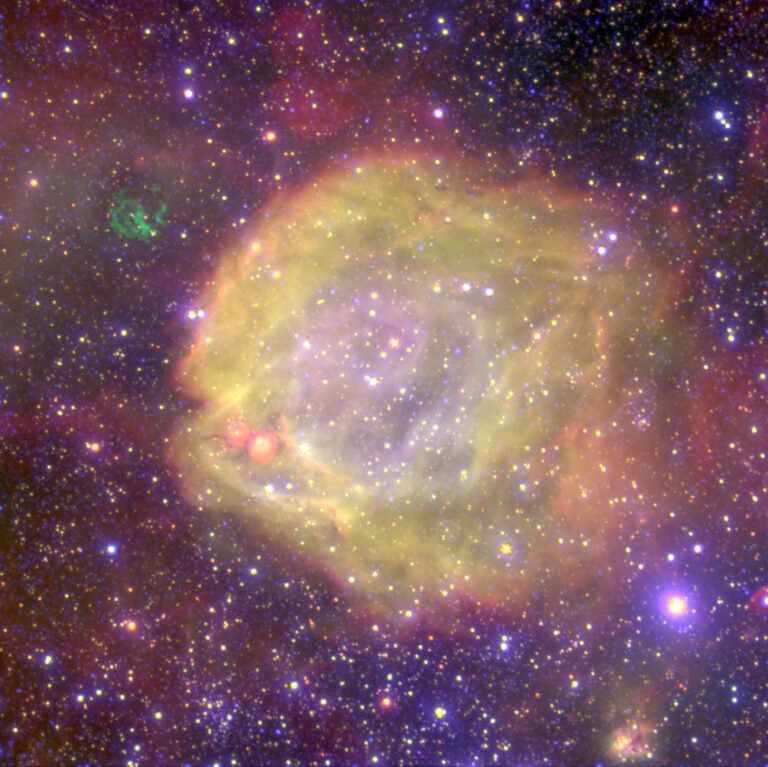If aliens from a distant solar system wanted to make their presence known, they would be better off writing than phoning – that is, using something more like the Rosetta Stone than a pulse of radio waves, a new study suggests.
The study, by Christopher Rose and Gregory White of Rutgers University in New Jersey, looked at the energy efficiency of different forms of long-distance communication. The results “suggest that our initial contact with extraterrestrial civilizations may be more likely to occur through physical artifacts — essentially messages in a bottle — than via electromagnetic radiation,” the authors write. Their paper appears in the September 2, 2004, issue of the journal Nature.
“If you don’t worry about delay, meaning whether you’re going to get a call back any time soon, then it’s much better to write the thing down,” Rose told Astronomy. “Radio seems really good, but it disperses rapidly as a function of distance. Mass doesn’t disperse that way.”
Of course, such a message — the authors call it an “inscribed matter” message — would not literally look like the Rosetta Stone. It would have a much greater “information density,” with billions of bits of information packed into a tiny volume. Such a feat has become far more plausible in recent years thanks to advances in nanotechnology.
As an example, the authors consider a message containing as much information as three standard DVDs — about 100 billion bits of information. They compare the amount of energy needed to send it physically, using a Voyager-size space probe, to that required to send and receive the same information via a radio beam, using a pair of antennae the size of the Arecibo dish in Puerto Rico, currently the world’s largest. If the target is more than 200 light-years from Earth, say Rose and White, the inscribed-matter method — the DVDs — is more efficient.
This also raises the possibility that artifacts from an alien civilization may have found their way to our solar system already. The authors suggest a number of places we might look for such inscribed-matter messages, from airless moons to the various “Lagrange points” in our solar system — stable locations where gravity does not perturb an object’s orbit. (This idea was central to the plot of 2001: A Space Odyssey, in which astronauts discover an alien-built monolith on the Moon.) Looking for such artifacts could be a new approach to the Search for Extraterrestrial Intelligence (SETI).
“Our results suggest that carefully searching our own planetary back yard may be as likely to reveal evidence of extraterrestrial civilizations as studying distant stars through telescopes,” the authors write.
Woodruff Sullivan, an astronomer at the University of Washington in Seattle, cautiously endorses the Rose/Wright paper in an accompanying article in the same edition of the journal. However, Sullivan points out several possible weaknesses in their argument. For example, “it is not clear that the key criterion for choosing a message’s medium would be energy expended per bit, as they [Rose and Wright] assume,” he argues. Sullivan also cautions there is no guarantee an inscribed-matter message “would ever in fact be recognized as such,” although he notes that electromagnetic messages may similarly fail to be recognized.
Paul Horowitz of Harvard University, a physicist involved with optical-wavelength SETI efforts, wonders if “pellets” of inscribed matter launched into space would actually end up where you wanted them to go. (Rose and Wright base their argument on blocks of matter that receive an initial “fling” rather than having any sort of rocket aboard.) Says Horowitz: “I think the big problem is, how would anyone, or any civilization, launch such a pellet and have it arrive where it’s supposed to with any probability of success?”
At the very least, the paper seems to be making scientists re-think some assumptions about interstellar communication. Rose and Wright have “an intriguing idea,” says physicist David Spergel of Princeton University. “Since we are completely ignorant about the goals of an alien civilization, it is worth trying all plausible approaches.”











